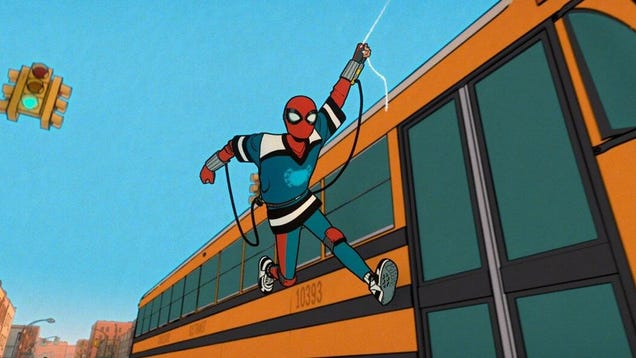2025 marks the 40th anniversary of director Stuart Gordon‘s 1985 classic Re-Animator (watch it HERE) – and to celebrate the occasion, Ignite Films is giving Re-Animator a 4K release! There will be four editions of this release – an ultimate limited edition box set, a deluxe edition set, a 4K UHD standard edition, and a Blu-ray standard edition – and all are available for pre-order at THIS LINK. The street date is April 3rd. Ignite Films also screened the 4K restoration for producer Brian Yuzna and stars Barbara Crampton and Jeffrey Combs, and you can find out what they had to say about it in the promo video embedded above.
Directed by Gordon from a screenplay he wrote with Dennis Paoli and William J. Norris (based on a story by H.P. Lovecraft), Re-Animator has the following synopsis: Re-animation, the science of bringing dead creatures back to life, is Herbert West’s dream. West tests his secret life-rejuvenating potion on some cooperative corpses at a local morgue. It’s a success But only a temporary one – as the dead spring to life, reacting violently to their re-animation. Zombies are loose and now West cannot control the very beasts he has re-created. The born-again dead are unstoppable, even severed body parts take on life like so many split worms Herbert West has a serious problem – will he become the first in a new breed of headhunters or all of his woes coming to a head?
Crampton and Combs are joined in the cast by Bruce Abbott, David Gale, and Robert Sampson.
Ignite Films’ ultimate limited edition box set contains: – 4K UHD-HDR/Blu-ray combo – Re-Animator at 40: A Conversation with Jeffrey Combs, Barbara Crampton, and Brian Yuzna – Piece By Piece: Cutting Re-Animator: A New Interview with Editor Lee Percy – The Horror of It All: The Legacy and Impact of Re-Animator – I Give Her Life: A Look Back at Re-Animator: The Musical – Re-Animating a Horror Classic: The 4K Restoration of Re-Animator – The Organic Theater Company of Chicago: A 1977 documentary featuring Stuart Gordon – New 40th anniversary 4K UHD trailer – Integral Version (105 mins) – Isolated Score – Audio commentary with director Stuart Gordon and actors Graham Skipper and Jesse Merlin of Re-Animator: The Musical – Audio commentary with Stuart Gordon – Audio commentary with producer Brian Yuzna, actors Jeffrey Combs, Barbara Crampton, Bruce Abbott, and Robert Sampson – Re-Animator: Resurrectus: Feature-length documentary on the making of the film featuring extensive interviews with cast and crew – Interviews with director Stuart Gordon and producer Brian Yuzna, writer Dennis Paoli, composer Richard Band and former Fangoria editor Tony Timpone – Music discussion with composer Richard Band – The Catastrophe of Success: Stuart Gordon and The Organic Theater: Director Stuart Gordon discusses his early theater roots and his continued commitment to the stage – Theater of Blood: Re-Animator: The Musical lyricist Mark Nutter on adapting the cult classic for musical theater – Extended scenes – Deleted scene – Trailer & TV Spots – Still Gallery – Barbara Crampton In Conversation: The Re-Animator star sits down with journalist Alan Jones for this career-spanning 2015 interview – A Guide to Lovecraft Cinema: Chris Lackey, host of the H.P. Lovecraft Literary Podcast, provides a comprehensive look at the many cinematic incarnations of Lovecraft’s work. – Doug Bradley’s Spinechillers: Herbert West, Re-Animator actor Jeffrey Combs reads H.P. Lovecraft’s original classic story – Newly produced bonus features – Legacy bonus features – 150-page hardcover book featuring new interviews with Jeffrey Combs, Barbara Crampton, writer Dennis Paoli, and composer Richard Band. Essays by Scout Tafoya, Kate Rife, Will Sloan, Alex Kittle, and Ben Sachs. Preface by Brian Yuzna. – Dr. Hill Collector’s Bobblehead: A must have for fans! With limited quantities available, this exclusive individually hand painted collectible won’t be restocked once it’s gone. – Collector’s art cards. To find out more, click over to the Ignite Films website.
Will you be buying this 4K release of Re-Animator? Let us know by leaving a comment below.
The post Re-Animator is getting a 4K release from Ignite Films; Barbara Crampton, Jeffrey Combs react in promo video appeared first on JoBlo.







